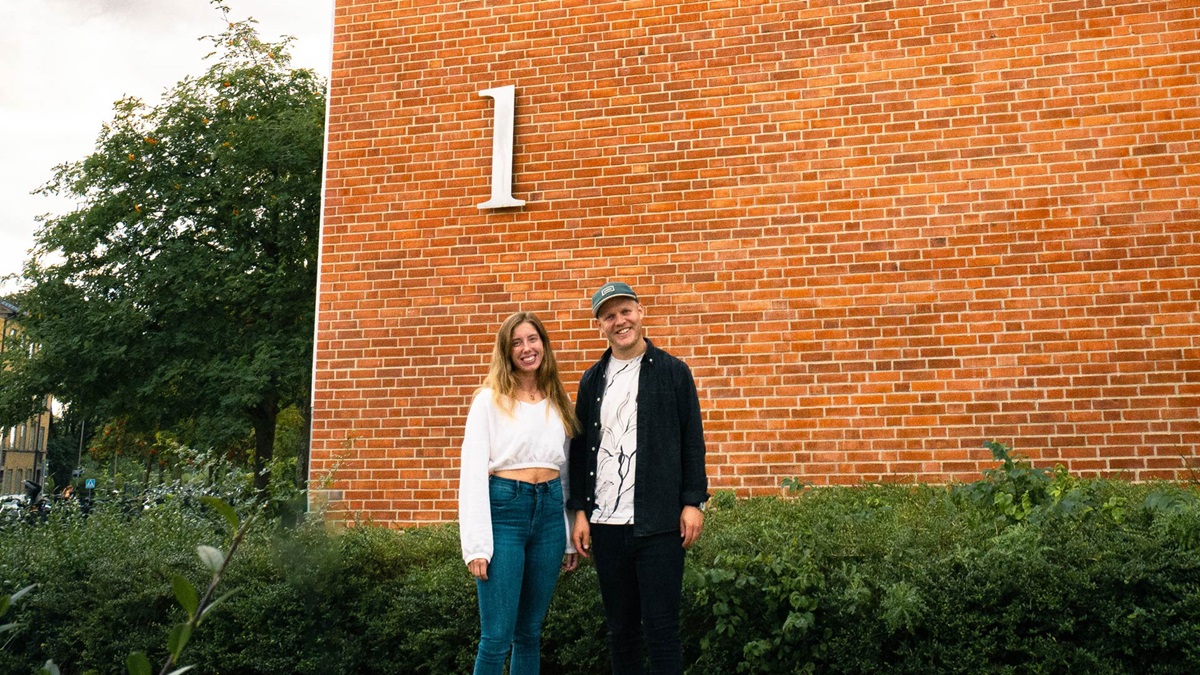
a school in Sweden dances for suicide prevention
On 8 September, two days before World Suicide Prevention Day, more than 30 000 students from 121 schools across Sweden will dance together in a joint demonstration of unity against suicide – one of the most pervasive health problems among young people in the WHO European Region.
Making a difference through dance
The event, entitled “Dance for Life” (in Swedish Dansa för livet), follows a simple but powerful premise: at the beginning of the new school year, all new students take a break from class together to take part in a school-wide dance.
“The aim of the project is to prevent mental illness among young people, reduce the number of suicides and break the stigma that is often associated with talking about mental illness,” explains Erik Allard, one of the project’s organizers.
Suicide is the fourth leading cause of death among people aged 15-29 worldwide. In 2019, more than 137 000 people, many of them young people, died as a result of suicide in the WHO European Region.
Erik, who teaches physical education and health education at Polhem School in Lund, came up with the idea for the Dance for Life project while cycling home from work. He wondered how health education in schools could be better tailored to the students’ wishes and needs. “They wanted to be heard and to see that their own efforts were reflected in the lessons. I took this revelation with me on my bike.”
He immediately thought of dancing. “Dancing can have a magical effect,” explains Erik. “It’s a creative activity and allows you to create something new and share something meaningful with others.”
He told other teachers about the idea, and they immediately got on board.
“We were excited and said, ‘Yes, let’s do it!’” recalls Mikaela Hilbertsson, who is also a physical education and health education teacher.
Part of a broader conversation
Dance and other artistic activities can have a positive impact on well-being, help reduce stress and promote socialisation among young people, according to a 2020 WHO Regional Office for Europe review.
But both Erik and Mikaela knew from the start that Dance for Life had to be part of a broader conversation about mental health at Polhem School. “We believe the project is a good starting point to stimulate a deeper conversation about mental health and mental illness in the classroom and in different subjects,” explains Mikaela.
Before and after the dance, Mikaela, Erik and other teachers provided the students with information about mental illness, how to deal with stress and emotions, and where and how to get help.
“We talk about how feeling stressed and unwell is completely normal. That it is possible to feel stressed for a long period of time, but that it is also possible to recover from it and how to recognize signs of recovery,” explains Mikaela.
According to the WHO, promoting this type of social and emotional learning in schools is an effective way to reduce suicide among young people. It is one of the key actions included in the WHO’s Live-life Toolkit, which details how to implement suicide prevention programmes at the local or national level.
At Polhem School, these activities were requested by the students themselves. Mikaela says: “I felt that they wanted to build mental health into the walls of the school, that they wanted to make it a part of everything they do.”
A wonderful expression of how to break a stigma
As full-time teachers, Erik, Mikaela and others at Polhem School knew they needed support to make the project a success. So, after convincing the school management, they contacted non-profit organizations across Sweden. One of them was the Tim Bergling Foundation.
“I was immediately enthusiastic about the idea,” says Klas Bergling, the foundation’s managing director. “Dance and music are a language that young people understand very well.”
Klas founded the foundation after his son, musician Tim Bergling – who became known worldwide under the name Avicii – died of suicide in 2018. The foundation’s goal is to support initiatives in Sweden and around the world to prevent mental illness among young people and promote their flourishing.
Klas was impressed that the Dance for Life project was just part of a longer course on social and emotional learning. “In Sweden, mental health is not yet part of our school education. But mental health is something that young people need to learn more about. Life is full of ups and downs, and the better prepared they are, the better they can deal with it. They also need to learn more about when to seek professional help.”
The foundation fully supported the project, for example by granting the school the rights to use Avicii’s music for the dance.
“I believe that the ‘Dance for Life’ is a wonderful expression of how to break the stigma surrounding mental health and suicide,” explains Klas.
Promote conversations about mental health
Polhem School held the first event as part of the Dance for Life project in September 2021. All approximately 900 new students were asked to participate in the project.
“I thought it was a really good and creative idea. A great way to raise awareness about the importance of mental health,” explains Linn, one of the students who took part in the dance in 2021.
This first event was a huge success. “We could see that the students and teachers were having a lot of fun for days,” says Erik. “We saw great reactions from teachers, students, guardians, even former guardians – that showed how effective it was. It really felt like we were making a difference.” They also saw the event as an opportunity to help new students connect with each other and build relationships.
The event was repeated in 2022 with similar success. Its impact was also more visible: the 2022 school survey recorded an increase in the number of students who strongly agreed that they had someone at school who cared for them – from 25% in 2020 to 35% in 2022. The proportion of students who graduated from school also increased – from 91% in 2020 to 97% in 2022.
What was most impressive was that more students began to talk about mental health.
“My classmates and I talked a lot about the topic before and after the dance. I think it inspired me to think about mental health and talk about it with my friends,” explains Linn, who has been at the school for three years now.
Let us dance together for life
This year, the Dance for Life is bigger than ever. As soon as the decision was made to include other schools in the project, they set up a link where schools could sign up. Erik says he would have been happy with 10 schools, but in the end they received registrations from over 100 schools.
“It was like a dream,” says Mikaela.
Looking ahead, Erik and Mikaela hope to receive further support from politicians to make mental health a permanent part of the curriculum for all students.
Klas Bergling believes that addressing mental health in schools is a good start, but that more should be done to support young people who have already left school. “Between the ages of 18 and 25, you are still seen as a young person, but you have nowhere to turn.”
Erik and Mikaela hope that the dance for life will also be introduced in other countries.
“Dance for Life is about doing something together,” explains Erik. “It creates a sense of togetherness that does wonders for our wellbeing – so let’s dance for life together!”

Ethel Purdy – Medical Blogger & Pharmacist
Bridging the world of wellness and science, Ethel Purdy is a professional voice in healthcare with a passion for sharing knowledge. At 36, she stands at the confluence of medical expertise and the written word, holding a pharmacy degree acquired under the rigorous education systems of Germany and Estonia.
Her pursuit of medicine was fueled by a desire to understand the intricacies of human health and to contribute to the community’s understanding of it. Transitioning seamlessly into the realm of blogging, Ethel has found a platform to demystify complex medical concepts for the everyday reader.
Ethel’s commitment to the world of medicine extends beyond her professional life into a personal commitment to health and wellness. Her hobbies reflect this dedication, often involving research on the latest medical advances, participating in wellness communities, and exploring the vast and varied dimensions of health.
Join Ethel as she distills her pharmaceutical knowledge into accessible wisdom, fostering an environment where science meets lifestyle and everyone is invited to learn. Whether you’re looking for insights into the latest health trends or trustworthy medical advice, Ethel’s blog is your gateway to the nexus of healthcare and daily living.



